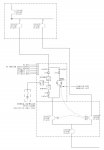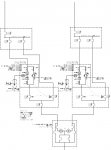Today i had a meeting with an UPS's supplier, he says the liebert UPS has a built in static bypass switch to unify the sources when the transferring operation, i'm wondering what are the differences between the static bypass switch and the static transfer switch?
Please correct me if i'm wrong,
The maintenace bypass is a manual override used basically for direct connected online UPS to bypass and maintain.
The static transfer switch is an automatic electronic transfer switch with very high speed operation & particularly used for the critical equipment in hospitals & not for the direct online UPS & the maintenace bypass is optional to be installed.
Static bypass switch??!!!
Please correct me if i'm wrong,
The maintenace bypass is a manual override used basically for direct connected online UPS to bypass and maintain.
The static transfer switch is an automatic electronic transfer switch with very high speed operation & particularly used for the critical equipment in hospitals & not for the direct online UPS & the maintenace bypass is optional to be installed.
Static bypass switch??!!!



